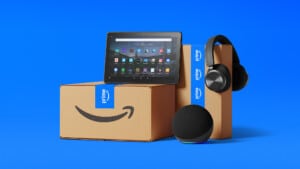How to Build a Multichannel Marketing Strategy for Prime Day 2025

With Amazon Prime Day quickly approaching, most brands are focused on preparing their Amazon storefronts, optimizing their listings, and dominating Amazon’s internal ad auctions. However, the brands that truly win Prime Day are those that build a cohesive, integrated campaign that extends beyond Amazon’s platform.
With retailers like Walmart, Target, and TikTok Shop launching competing promotional events during the same window, your brand’s Prime Day strategy can’t just live on Amazon. The most successful brands are leveraging email marketing, SMS campaigns, paid media, and influencer partnerships to create a unified customer experience that maximizes both reach and revenue.
Driving Sales with Email & SMS
Email and SMS are two of the most cost-effective tools you have going into Prime Day. These are owned channels, which means you’re reaching people who already know your brand — and are far more likely to buy when the timing and offer are right.
Offer Early Access & VIP Alerts: Use Prime Day to reward loyalty. Mimic Amazon’s exclusive Prime member experience by sending early email and SMS alerts to your VIP segments, giving them a “first look” at upcoming deals.
Pro Tip: Send your first wave of alerts 24–48 hours before Prime Day officially begins, with a second push the morning of Day 1.
Drive Traffic with Channel-Specific Deals: Send SMS or email-only coupon codes that drive traffic directly to Amazon listings. These not only help convert but also provide clear tracking on channel performance via Amazon Attribution.
Notify with Flash Deal Alerts: SMS is ideal for real-time promotions. Use it to notify subscribers about limited-time Lightning Deals as they go live. With 80.5% of consumers reading texts within five minutes, SMS is a powerful way to deliver timely promotions.
Showcase Deals on Sneak Peek Landing Pages: Create a dedicated Prime Day preview page showcasing top deals. Share these pages via email and SMS in the week leading up to the sale. Include product highlights, expected discounts, and “Add to Wishlist” options to build interest.
Create and Promote Gift Guides: Create themed product bundles like “Home Office Refresh” or “Dorm Room Must-Haves.” Promote these gift guides via email and SMS to inspire purchases.
Optimizing Paid Media
During Prime Day, media costs rise across the board. The key is not necessarily to spend more — but to spend smarter. A well-structured paid media plan ensures you’re capitalizing on high intent without wasting budget.
Utilize Amazon Attribution to Measure Impact: Tag all external campaigns (Meta, TikTok, Pinterest, Google) with Amazon Attribution links. This gives you visibility into which channels and assets are actually driving conversions.
Pro Tip: Utilize the insights from Amazon Attribution to strategically retarget your audiences post-Prime Day with highly personalized offers.
Focus on Upper-Funnel Audiences: Run upper-funnel campaigns ahead of Prime Day to build awareness and drive interest—then retarget past purchasers, abandoned carts, and recent site visitors with personalized product ads during the event. This layered strategy helps boost conversions when ad costs peak.
Pro Tip: Exclude customers who’ve already bought the promoted SKUs in the last 60 days to avoid wasting ad spend.
Use Value-Focused Messaging & Purposeful Creative: During Prime Day, consumers are looking for value and urgency. Your ads need to reflect that. Highlight time-sensitive promotions, use headlines that emphasize exclusivity and savings, and incorporate visuals that mirror what customers are seeing across your other channels. Don’t forget to refresh your creatives consistently throughout this year’s extended four-day window to avoid fatigue.
Leveraging Influencers and UGC
Influencers and content creators can add a layer of authenticity and social proof that branded creative alone can’t achieve. It’s also a fast-moving, flexible format that fits perfectly into Prime Day’s high-urgency, short-window environment.
Create “Prime Day Picks” Collections: Have influencers curate their own Prime Day “must-haves” or themed shopping lists (e.g., “Kitchen Upgrades Under $50” or “What I’d Buy Again on Prime Day”). These can be posted on blogs, LTK shops, Instagram Stories Highlights, or Amazon storefronts.
Schedule Real-Time Content: Collect UGC or coordinate with influencers to publish posts at the exact moment your Lightning Deals or limited-time offers go live. Timing content to match deal windows drives urgency, boosts engagement, and maximizes traffic when inventory is most available.
Showcase Practical Value: The most effective content won’t just focus on aesthetics — it will highlight function, utility, and value. Ask your partners to explain how a product saves money over time, solves a daily problem, or improves quality of life.
Repurpose Content Across Channels: High-performing influencer content and UGC can be used in Amazon Posts, Sponsored Brand Videos, social media ads, and even email banners. This extends your investment and keeps your content consistent across platforms.
Amazon Prime Day Isn’t Just a Sale — It’s a Full-Funnel Brand Moment
While competitors focus solely on optimizing their Amazon presence, you can build a comprehensive, multi-channel strategy that drives traffic, builds customer relationships, and maximizes revenue across platforms.
This means using email and SMS to prime your audience, leveraging paid media to scale your message, and tapping influencers and content creators to build relevance and trust. It means treating Prime Day not just as a sales window, but as a fully integrated marketing campaign.
Don’t let your Prime Day strategy live in silos. Partner with WITHIN to develop and execute a truly integrated marketing campaign that drives performance across all channels.
Authors
Carla Donahue, Lifecycle Director
Vince Houghton, Associate Director, Retail Media & Marketplace
Jenna Weintraub, Influencer Director